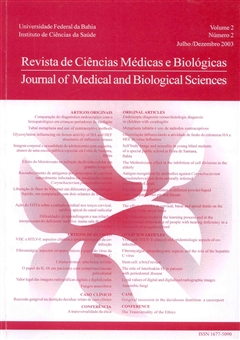Tubal metaplasia and use of contraceptive methods
DOI:
https://doi.org/10.9771/cmbio.v2i2.4625Keywords:
Tubal metaplasia. Cervix. Cervico-vaginal smear.Abstract
To determine the frequency of detecting tubal metaplasia of the endocervix (TME) in cervico-vaginal cytological smears, we retrospectively reviewed 450 out of 2,371 cervico-vaginal Pap smears, selected by chance, with no glandular abnormality at the first examination [150 from women using intrauterine contraceptive device (IUD), 150 from sterilized women by bilateral tubal ligation (BTL); and 150 from women using no or other contraceptive methods]. TME was seen in 16.7% of the patients using IUD; 70.1% of the patients submitted to BTL; and 49.0% of the patients from the last group. Atypical glandular cells on cervical cytology are a problem for clinicians and pathologists alike. The differential diagnosis of endocervical glandular abnormalities including TME is discussed.Downloads
Download data is not yet available.
Downloads
Published
2003-01-01
How to Cite
Ruas, N. M. C., Sobrinho, C. L. N., Barbosa, G. G. de A., Sadigursky, M., & Barbosa Júnior, A. de A. (2003). Tubal metaplasia and use of contraceptive methods. Journal of Medical and Biological Sciences, 2(2), 163–169. https://doi.org/10.9771/cmbio.v2i2.4625
Issue
Section
ORIGINAL ARTICLES
License
The Journal of Medical and Biological Sciences reserves all copyrights of published works, including translations, allowing, however, their subsequent reproduction as transcription, with proper citation of source, through the Creative Commons license. The periodical has free and free access.


